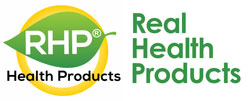There are plenty of products in our grocery stores that tout themselves as being “heart healthy” or part of a diet “shown to reduce heart disease.” These products, such as cereals or other processed foods, can contain many other ingredients that would counter any suggested benefits they may provide. There are nutrients with a proven health benefit that does not generally contain added ingredients: EPA & DHA.
What is EPA & DHA?
EPA stand for Eicosapentaenoic acid. It is a combination of the Greek eikosa – “twenty,” and penta – “five,” referring to its twenty carbon atoms and 5 double-bonds. -ene is a suffix describing an unsaturated organic compound, and -oic refers to a bond that includes carbon, oxygen and hydrogen.
DHA stands for Docosahexaenoic acid. From Greek duo – “two,” eikosa – “twenty,” hexa – “six.” -ane for a substance with a special makeup of hydrogen and carbon atoms, and -oic, same as in EPA above.
Both are just the scientific names for two essential Omega-3 fatty acids.
Why is EPA & DHA Important?
EPA & DHA are known as polyunsaturated fats. As Western diets moved away from fresh foods such as fish and towards fast, processed foods high in saturated fats, the intake of essential fatty acids declined dramatically. There should be a 1-to-1 balance of Omega-6 (vegetable and nut oils) to Omega-3. However, average individuals can have as much as 17-to-1 Omega-6 to Omega-3 in their diet!
There are a host of health benefits linked to these Omega-3 fats. Namely, inflammation reduction, cardiovascular, brain and neurological health.
Without these essential fats, people are at greater risk of heart disease, stroke, dementia, alzheimer’s, arthritis, macular degeneration and cancer.
How to Increase EPA & DHA Intake
Diet is the best way of increasing your EPA & DHA intake. Since it appears readily in commonly-available products, it is simply a matter of incorporating these into your diet.
The American Heart Association recommends 0.5g of EPA & DHA a day, however Health and Welfare Canada supports up to 1.6g per day.
There are many plant-based sources of Omega-3s, but these mostly provide ALAs, or Alpha-Linolenic Acids, that must be converted over to EPA & DHA in the body. That conversion (only about 5%) does not provide equivalent amounts. To meet one’s EPA & DHA minimum, it is best to stick to pure EPA & DHA in one’s diet.
Following is a list of some foods by Omega-3 content per 100 grams12.
| Salmon | 1.8g |
| Anchovies | 1.4g |
| Trout | 1.2g |
| Sardines | 1.0g |
| Egg Yolk | 0.8g |
| Shrimp | 0.5g |
| Brussels Sprouts (1 cup) | 0.2g |
| Grass-Fed Beef | 0.1g |
Others, such as flax seed, tofu, walnuts & tuna are not recommended as valid sources of EPA & DHA due to environmental contaminants or having a high Omega-6 to Omega-3 ratio.
Another option is to go straight for the EPA & DHA found in concentrated fish oil supplements. Be wary of this, as the supplement market is saturated with low quality or low-content fish oils. Most fish oils contain only 300mg of fish oil, so you would need 6 capsules to fill your daily requirement!
Our Omega 3 Fish Oil is sourced from cold water fish, that have a higher fat content, is distilled to remove impurities, and each capsule contains 1200mg of EPA & DHA!
By knowing what EPA & DHA is, you too can get your health under control and ensure you meet your daily health requirements of EPA & DHA.


